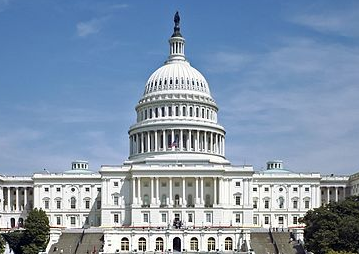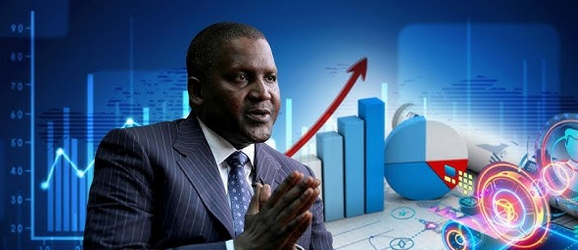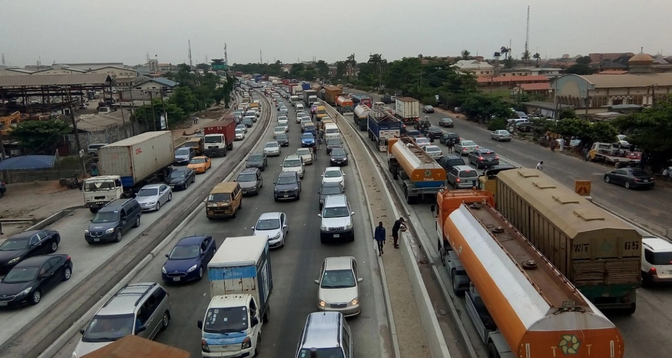Photo: Wikimedia Commons
President Joe Biden included a long overdue pay raise for millions of America’s minimum wage workers in his $1.9 trillion rescue plan rolled out last week.
Its inclusion immediately came under fire by those who argue it is extraneous to an economic recovery and divisive. However, research from the Center for American Progress and many economists shows that getting money into the hands of those who are most likely to spend it will boost their communities and the national economy and also reduce federal spending.
Since 2014, CAP has demonstrated that an increase in the minimum wage would significantly decrease the use of the Supplemental Nutrition Assistance Program (SNAP), as millions of workers are currently paid so little that they must rely on the public social safety net. Indeed, an increase to the federal minimum wage (and the elimination of the subminimum wage for people who work for tips and people with disabilities) would have broad benefits for the economy beyond the wages of affected workers. Wage increases—particularly for those at the bottom of the income spectrum—increase community-level economic activity and support local businesses; reduce the amount by which taxpayers subsidize corporations for the low wages they pay; and reduce the pay inequalities for women and people of color that depress overall economic growth.
An increase to the minimum wage would be far from divisive: American voters have repeatedly signaled broad, bipartisan support for raising the minimum wage to $15. In November, 61 percent of Florida voters supported a ballot measure to do just that, even as the state’s voters backed Donald Trump for reelection. The percentage of Americans who say that they support raising the minimum wage has grown during the pandemic—66 percent of Americans supported raising the minimum wage in February 2020, while 72 percent supported it by August 2020.
The failure of the Senate in recent years to pass minimum wage legislation has meant real, tangible harm to American families. The last time Congress passed an increase to the minimum wage was in 2007, which fully phased in by 2009. Since 2009, America’s minimum wage workers have endured the longest period since 1938 without a pay raise, while the rising cost of living simultaneously eroded the value of the minimum wage by more than 17 percent. Last year, CAP put this into sharp relief by highlighting how much workers are losing each day the Senate fails to act:
While the Raise the Wage Act languishes in the Senate, workers lose $62 every eight-hour workday earning an hourly wage of $7.25 instead of $15. That’s $310 a week, $1,348 a month, and $16,174 a year. Eliminating these losses would also be a crucial step toward reducing existing pay gaps for women and particularly women of color, who disproportionately work in low-wage and tipped occupations.
As Congress works on coronavirus rescue legislation and a subsequent package to rebuild the economy, the minimum wage should not be dismissed. Raising the wages of low-income workers will stimulate the economy; substantially lower the amount the country spends on social safety net programs such as SNAP; and reduce economic inequality, thereby unleashing additional economic growth in a period of recovery.
Stimulate the economy by putting more money in workers’ wallets
Phasing in a minimum wage increase between 2021 and 2025 would boost consumer spending and economic growth as the country recovers from the public health and economic crises.
Different methodological approaches predict varying aggregate effects of minimum wage increases. However, calculations uniformly point toward wage increases begetting stimulus, especially wage increases for low-wage workers:
- The Federal Reserve of Chicago determined that low-wage worker households spent an additional $2,800 in the year after a $1-per-hour increase to the minimum wage.
- The most recent analysis from the Economic Policy Institute found that increasing the minimum wage to $15 by 2025 would generate $107 billion in higher wages. Their earlier analysis indicates that an increase from $7.25 to $9.80 per hour between 2012 and 2014 would have generated “approximately 100,000 new jobs.”
- The Institute for Policy Studies calculates that for every extra dollar going into the wallet of a low-wage worker, about $1.21 is added to the overall economy.
Broad consensus in the academic research over the past 30 years has debunked the idea that raising the minimum wage causes employers to employ fewer people. Economists found that a $15 minimum wage would not reduce employment even in areas that currently have the lowest wages. Dozens of careful studies have explored how minimum wage laws affect earnings and employment, influenced by the seminal 1994 work of David Card and Alan Krueger.
In spring 2019, prominent economists in the US and the UK published an analysis of 138 state-level minimum wage changes since 1979, finding that the overall number of low-wage jobs remained unchanged after the increase and that low-wage workers who were already earning above the minimum also saw modest wage increases. In fact, in 2014, the 13 states that raised their minimum wages added jobs at a faster rate than the states that did not, according to the U.S. Department of Labor.
New analysis from CAP Distinguished Senior Fellow Austan Goolsbee shows that individual consumer choices driven by fear of COVID-19 infection—not legal closures or stay-at-home orders—largely drove changes in consumer traffic and spending. This indicates that once vaccination rates increase and fear of exposure decreases, consumer spending patterns will readjust if consumers have sufficient funds to spend.
The post-pandemic economy will provide a strategic moment to ensure that those in low-income households (who are more likely to spend each additional dollar they receive in pay than higher-income people) will be able to increase their consumption as needed. New research demonstrates that minimum wage increases have a particularly strong effect on households’ real spending on food, particularly food prepared away from home. This category of increased spending would be particularly beneficial to a recovering restaurant sector.
Ensure that taxpayers aren’t subsidizing corporations for workers’ low pay
Paltry pay with ever-decreasing purchasing power ensures that many people who work full-time for minimum wage pay rely on programs such as SNAP and Medicaid to provide food and health care for their families. This effectively means that the federal government is subsidizing low-wage employers for their labor costs while their workers barely scrape by.
CAP has a body of work demonstrating how minimum wage workers use SNAP to keep food on the table for their families—requiring taxpayers to subsidize corporations who underpay their workers.
- A groundbreaking 2014 CAP report by University of California, Berkeley economist Michael Reich and Rachel West found that a contemporaneous proposal to raise the minimum wage to $10.10 per hour would reduce SNAP enrollments by 3.1 to 3.6 million people, resulting in an annual decrease in program expenditures of nearly $4.6 billion.
- Rachel West then updated these figures in a 2015 CAP piece for proposals to increase the minimum wage to $12 per hour. West found that SNAP spending would fall by an estimated $5.3 billion each year in today’s dollars, saving taxpayers more than 7 percent in overall SNAP expenditures. When fully implemented, West also found that savings would total $52.7 billion over the following decade.
- In this piece, CAP highlighted a subsequent University of California, Berkeley study that estimated U.S. taxpayers foot the bill for $152.8 billion in government assistance programs for low-wage workers each year in lieu of their employers paying adequate living wages and benefits.
In a 2019 piece, economist Arindrajit Dube examined the impacts of minimum wage hikes on workers in the bottom 30 percent of income, finding that increases confer significant income gains to these workers. Dube also observed that when accounting for the effects of government assistance programs (noncash transfers, including SNAP, school lunches, and housing subsidies) and tax credits (EITC and child tax credits), those income gains were only two-thirds as large.
The offset represents a significant reduction in taxpayer expenditures, effectively substituting work-based earnings for public assistance. Dube also observes that a “reduction in public benefits like SNAP can be efficiency enhancing, since in principle these programs are funded using taxation that can have deadweight losses.”
Reducing inequality will lead to higher, more sustainable growth
Over the past decade, CAP research and policy recommendations have documented how inequality slows growth, with a particular focus on economic inequality that stems from structural racism and sexism. Decreasing income inequality and working toward the elimination of the wealth gap (another disparity that stymies overall growth) requires targeted policies to build economic security. Raising the minimum wage is one tool for combatting this inequality—and therefore stimulating growth.
Women (and women of color in particular) are overrepresented in minimum wage work, and CAP research demonstrates that this is especially true in occupations in which people receive tips but are paid as little as $2.13 per hour by their employer. The National Women’s Law Center calculates that “for women working full time in states with a minimum wage of $10 per hour or more, the wage gap is 34 percent smaller” than the wealth gap in states with a $7.25 minimum.
CAP research shows that 64 percent of women were the sole or primary breadwinner for their family in 2017, and women account for most consumer spending in the economy. Nearly 59 percent of workers who are paid the federal minimum wage are women. Therefore, increasing the minimum wage is particularly likely to stimulate consumer spending.
Black and Latino workers are disproportionately represented in occupations with the lowest wages. Nearly one-third of all Black workers and one-quarter of all Latino workers would get a raise under a $15 minimum wage. Decreased income inequality would lead to an increase in overall economic growth, as economic growth in the United States is constrained by income inequality.
Conclusion
Rather than continuing to subsidize corporations that pay paltry wages to workers—which means that those workers must find necessary support in the social safety net—a higher minimum wage would boost millions of families out of poverty and further stimulate the economy. As we move toward a post-pandemic economic recovery, increased money to families who are the most likely to spend any marginal dollar will have an outsize effect on consumer spending. A minimum wage increase would give an overdue raise to workers and would be well-timed for an economic recovery.
Lily Roberts is the managing director of the Economic Policy Team at the Center for American Progress. Ben Olinsky is the senior vice president for policy and strategy at the Center.







